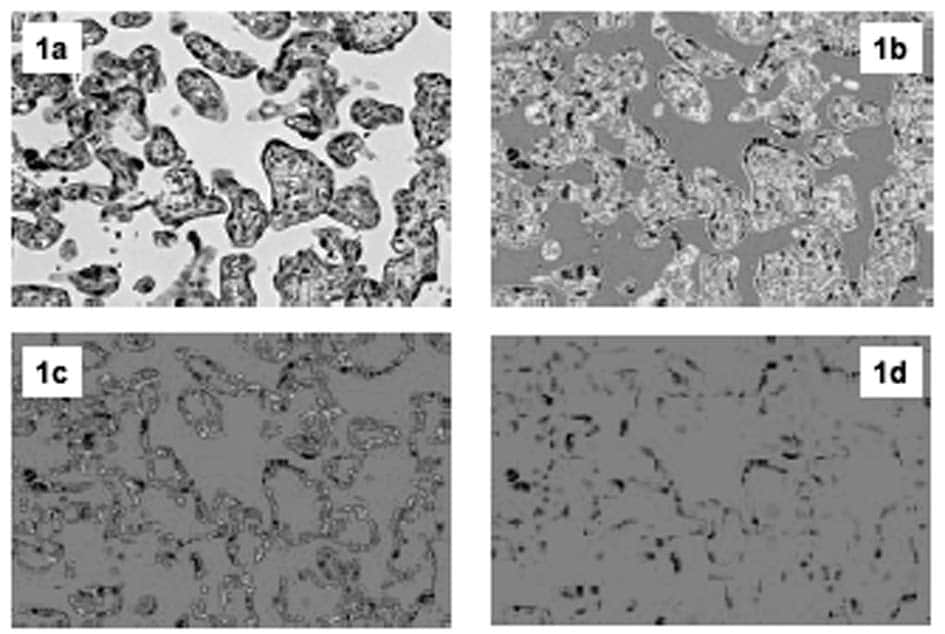The purpose of this study was to use visual image analysis to observe changes in the morphology and composition of placental villi in pregnancies complicated by pre-eclampsia (PE) and intrauterine growth restriction (IUGR).
Placental biopsies from 9 normal pregnancies, 5 cases of PE, 5 cases of IUGR and 5 cases of PE with IUGR were collected and randomly sampled following written informed consent, according to local ethical committee guidelines. Following formalin-fixation, wax-embedded sections were cut (5 µm) and stained with haematoxylin and eosin. These placental sections were subjected to image analysis using Metamorph software. Monochrome images (Fig. 1A) were pseudocoloured and thresholding applied to quantify areas of villous (1B), syncytiotrophoblast (1C) and syncytial nuclei (1D). All additional measurements were obtained from these primary variables.
Fetal weights were reduced in all complicated pregnancies, but only smaller placentae were obtained in cases of IUGR (631 ± 34 g vs. 356 ± 53g, mean ± S.E.M. P < 0.05 2-way ANOVA). PE, with and without IUGR, had no effect on total villous area or intervillous space. IUGR alone showed a consistent reduction in villous area (56.0 ± 2.4 % vs. 43.6 ± 3.3 %, P < 0.05). The ratio of syncytium to villous was reduced in all cases of PE (0.38 ± 0.03 vs. 0.24 ± 0.07, P < 0.05), but this remained unchanged in IUGR. Birthweight was positively correlated with both placental size and total villous area occupied (P < 0.0001 and P < 0.05, Pearson’s coefficient). Increasingly positive relationships were recorded between syncytiotrophoblast area and syncytiotrophoblast cytoplasm and birthweight (P < 0.01 and P < 0.001).
These measurements point to impoverished villous development in idiopathic IUGR. Even correcting for villous anomalies, the placental syncytium appears to be the dominant element in placental efficiency. These observations suggest that idiopathic IUGR and IUGR in PE have a separate aetiology, idiopathic IUGR arising through a reduction in placental weight alone, and IUGR in PE caused by changes in syncytiotrophoblast amounts, more specifically the syncytiotrophoblast cytoplasm.
This work was supported by Tommy’s – The Baby Charity

